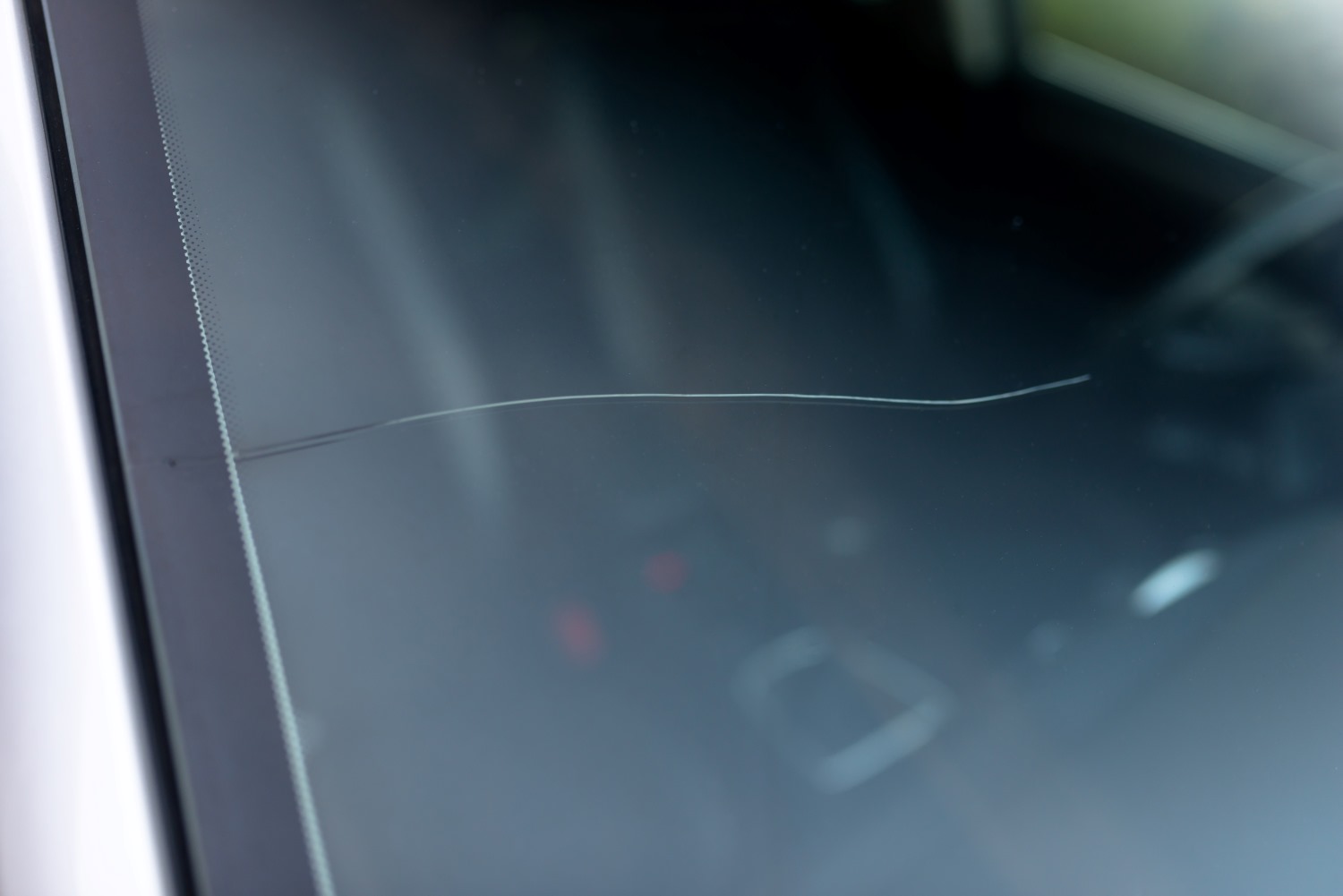9000+ Cashless Garages
96% Claims Settled (FY 24-25)

9000+ Cashless Garages
96% Claims Settled (FY 24-25)



Scratches on your windshield can be both unsightly and hazardous. They cause obstruction of view, diminish safety, and even put you at risk for significant repair costs. However, the best part is that most scratches can be easily repaired using simple tools and straightforward techniques.
Any scratch caused by debris, wipers, or an accident can be addressed if one knows how to fix such scratches. This article will explore how to remove scratches from the windshield, heal deeper scratches, and prevent any further ones.


The windshield is composed of two layers of curved glass and a plastic layer, typically Poly Vinyl Butyral (PVB). Typically, the outer glass layers are composed of tempered glass. This can be strengthened through thermal treatment to improve impact resistance. It helps hold the shattered shards inside itself in the event of breakage.
This structure is designed to be strong, clear, and safe. Laminated glass is more challenging and less prone to breakage than standard glass; it is an important safety feature in most modern cars. Statistics indicate that over 80% of vehicles use laminated glass for their windshields due to its durability, properties, and safety.
Scratches on car windshields can create visibility issues and ruin the look of your vehicle. Even if the scratches are minor surface scratches or deep scratches that can be felt with a fingernail, it is always best to treat scratches immediately for both safety and visual appearance. Below are steps for removing scratches and restoring visibility on your windshield.
Gently rub your fingernail over the scratch to examine the surface. If your fingernail catches a scratch that is too deep to repair, it should be treated by a professional. If your fingernail does not catch the scratch, it is treatable at home.
If your windshield scratches are light, an ordinary glass polishing compound will generally suffice. If there are deeper scratches, choose a cerium oxide, an abrasive but effective polishing compound safe for glass.
Make sure to clean the windshield with a quality glass cleaner. Remove all dust, dirt, and debris to prevent additional scratches during the repair process. A cleaner surface enables a more thorough application of the polishing compound.
If you are using cerium oxide, mix it with water to form a semi-solid paste. Your product consistency should be thick enough to keep in one spot while still being easy enough to apply. This should help with achieving even coverage.
Using a soft, lint-free cloth or polishing pad, apply the compound with consistent, gentle pressure in a circular motion. You want to work on the scratched section, allowing the compound to fill and smooth out the scratch.
Allow the compound a minute or two to rest, allowing it to interact with the polished surface of the glass. This brief resting period will allow the compound to break down the scratch more effectively and polish the glass evenly.
After buffing, wipe away the compound and inspect your work. If the scratch is still visible, repeat the application process, buffing until the scratch fades or disappears. Remember that if it is deep enough, it may take multiple rounds.
When you are satisfied with the result, rinse the area with clean water and dry it with a microfiber cloth. Ensure nothing is left behind, as residue can attract dust or create streaks.
Apply a glass sealant to protect against future scratches. The glass sealant acts as a smooth, invisible barrier that repels contaminants & debris and water. Regular cleaning with a non-abrasive cloth and maintaining your wipers also helps keep your glass scratch-free.
The windshield wiper scratches are mostly unavoidable. However, you can remove the scratches by following the tips below:
Worn-out wiper blades with rough edges can often cause scratches on the windshield. Replace them regularly to prevent your windshield from accumulating more scratches or damage.
Clean the windscreen very well before undertaking repairs. Dust and other materials left on the glass are more likely to cause scratches during the windshield repair on your vehicle
Take a small amount of glass polish or toothpaste. The toothpaste contains mild abrasives, which help remove minor scratches. So, gently rub out the minor scratches on the surface
A special glass repair kit can effectively solve scratches caused by wiper blades. This usually comes with better compounds to remove scratches. Choose a popular repair kit from the market.
There are many ways in which scratches happen on your windshield. Here are some major causes of scratches on your windshield:
The debris on the road consists of small pieces of rock, sand, and gravel from the road surface and other vehicles passing by. These sharp pieces smash against the glass with huge force, thus providing visible scratch marks.
Wiper blades with worn or damaged rubber may rub against the windshield, potentially causing scratches. In most cases, this occurs because debris becomes stuck to the blades. One should change the wiper blades to avoid it
Using improper cleaning tools, such as rubbing dirty rags or sponges on your windshield. This causes unwanted scratches on the windshield. Instead, use soft, lint-free clothes or microfiber towels.
Accidents and vandalism may create deep scratches or cracks. Assess correctly the damage caused by an accident or by other external factors. Then, follow the proper procedures for the repair processes.
Certain weather conditions, such as hailstorms, falling branches, and flying debris caused by strong winds, can also cause scratches. Be very watchful about the weather forecast and park your vehicle in a safe place.
Here are a few ways through which you can avoid scratches on your windshield in the future:
Replace old blades promptly and opt for high-quality replacements. Good-quality blades allow smooth gliding over the windshield. Thereby minimising damage to the windshield.
Dirt should be cleaned off frequently. It helps to prevent dust from accumulating. This way, the chances of abrasion caused by grit during driving or cleaning are minimised on the glass.
Parking your vehicle under trees exposes your windshield to falling branches, sap, or bird droppings. These can lead to scratches and stains, so select a parking spot wisely.
Choose a touchless car wash or ensure that the brush-using one has soft microfiber cloths. So it doesn't brush your windshield too harshly, and with filthy, old brushes, it makes your car look ugly.
Scratches on a windshield reduce the driver's vision and impact the safe driving experience. With some mere maintenance, you can avoid it. The tiny scratches can be remedied with a DIY repair kit, polish, or even toothpaste. However, deep scratches require professional repair.